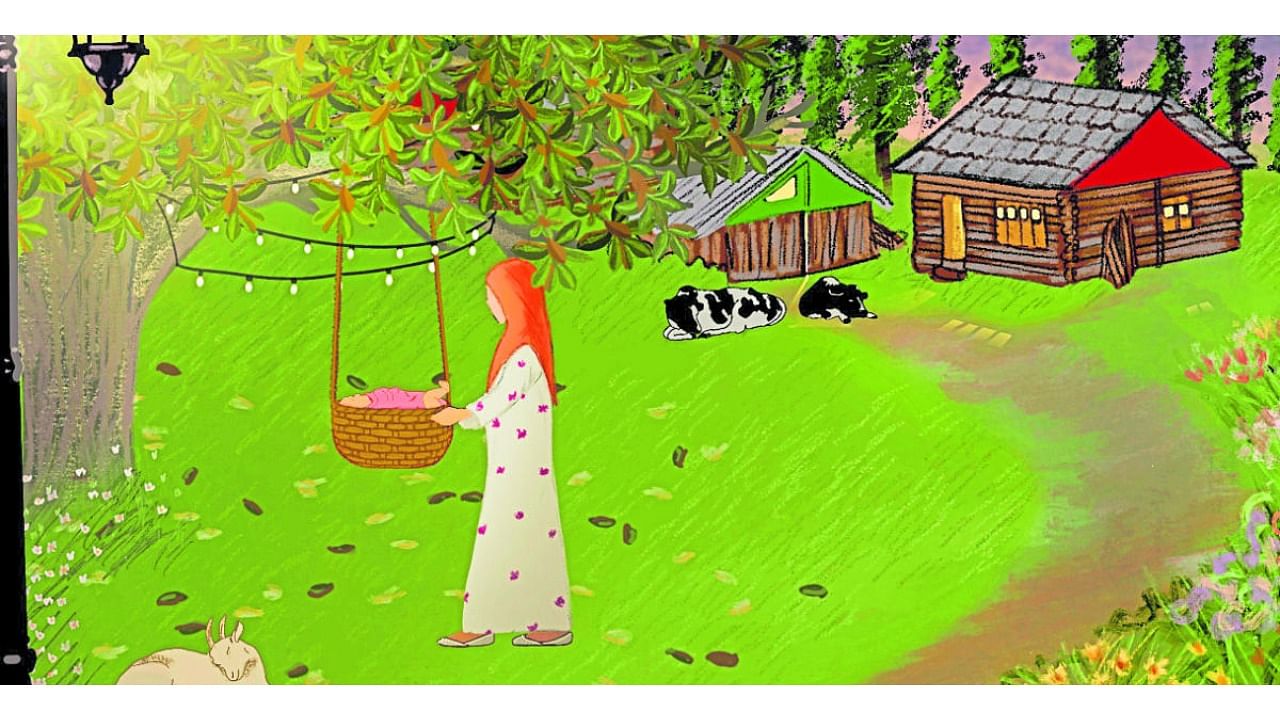
In the age of audiobooks and white noise machines, lullabies have fallen off the list of sleep rituals. Two friends — Gurupriya Atreya from Bengaluru and Vedanth Bharadwaj from Chennai — are now bringing those sleep songs back into our lives.
Thanks to their project, Sing A Lullaby.
They have curated 52 lullabies from 38 Indian and foreign languages, and taught them to parents, aunts-uncles, grannies, nannies, and even children. The workshops were held online, featuring one lullaby once a week for all 52 weeks between October 27, 2020, and October 19, 2021.
Gurupriya is a singer-voice over artiste. Vedanth is a vocalist and composer. And they both are parents to young girls, aged five and seven respectively. So the lullaby project fit into their lives organically, they say.
In phase two, the duo is planning to record and release these lullabies into four albums. Starting off, they have dropped an Urdu-Hindi single ‘Amna Bibi’. It’s sung in the lilting voices of Gurupriya and A R Rahman’s daughter Khatija and is accompanied by an animation of a mother rocking her baby to sleep on a farmhouse.
“I learnt ‘Amna Bibi’ from the wife of sarangi artist Sarfaraaz Khan from Bengaluru. One of her grandmothers from Pakistan would sing this to her when she was young,” shares Gurupriya. As for the collaboration with Khatija, that “happened through Rahman sir”, after they sent him the lullaby over email.
Behind the scenes
They had to source most of the lullabies from friends, the artist community, and the Internet. Because between them, they knew only eight to 10 songs.
They have now collated lullabies in Sanskrit, Bidari, Braj, Maithili, Bhojpuri, Konkani, Sindhi, Kumaoni and Himachali, among other Indian languages. The foreign collection comes from Sri Lanka, Mali, Albani, Trinidad, Lithuania, Tonga and other countries, and includes the first recorded lullaby from Nepal, ‘Aaijo Nidari’. After sourcing the lyrics, Gurupriya and Vedanth would approach native speakers of that language to grasp the meaning, phonetics and diction, so they could teach it forward.
Their research exposed the problems plaguing the oral traditions. “A friend from Bhaini Sahib, a village in Punjab, sent me the lyrics of a rare lullaby. He didn’t know how it was sung, so we roped in Punjabi folk singer Radhika Sood Nayak to set music to the words ‘Alhad Balhad Baweja…’. She’s managed to imbibe the essence of Punjab, its air, soil and water, in it,” shares Vedanth.
Some revelations were beautiful, like the Bhojpuri lullaby ‘Sutal Saiyaan’. “In this, a man requests a bird to not chirp and disturb his lover in the middle of the night. It’s sung very sweetly,” says Gurupriya.
‘Baragina Banamadi Balagi Battala Thumbi’ is another favourite. This Bidari Kannada folk composition is about a mother cajoling her baby to eat. “It’s a work song, sung by mothers working in the paddy fields where they carry their babies on the back. I can relate to the idea of working while holding a baby,” she explains.
They also realised that folk traditions across the world have things in common. “In Tamil lullabies, we use ‘aaraaro’ for sleep while the Spanish use ‘arru arru’,” Vedanth points.
Some revelations were, well, that. “We found a scary lullaby from Trinidad, where the mother sings to the child that if he or she doesn’t sleep, a monster would come and suck the blood,” he says about ‘Dodo Piti Popo’.
By and large, lullabies across cultures are similar in lyrical and musical structure. “Lullabies are simple to sing, hummable, repetitive in patterns, and calming in nature. They should help both the listener and the singer drift to sleep. In terms of themes, birds, butterflies, squirrels, trees, the beauty of the cradle, stars and moonlight feature routinely,” says Vedanth.
‘Lullabies for all’
The duo had never thought the project would come this far.
“Seven years ago, we had made a promise that we will do an album of lullabies. It finally took off during the pandemic. Coincidentally, it came at a time when people were struggling to sleep and needed healing. Lullabies have that healing, soothing effect,” says Vedanth.
“Not just young parents, our workshop also had adults who wanted to learn and sign these lullabies to their elderly parents and also to each other. Lullabies are for all,” says Gurupriya.
One feedback moved them the most. “A young mother wrote to us that everybody in her big family has formed a connection with her newborn except her. She wanted to learn these lullabies and sing them to her baby to form that connection,” shares Vedanth.
She is not off the mark. Scientists say lullabies strengthen the emotional bond between the parent and the child, and can also stimulate sleep, language and cognitive development in babies.